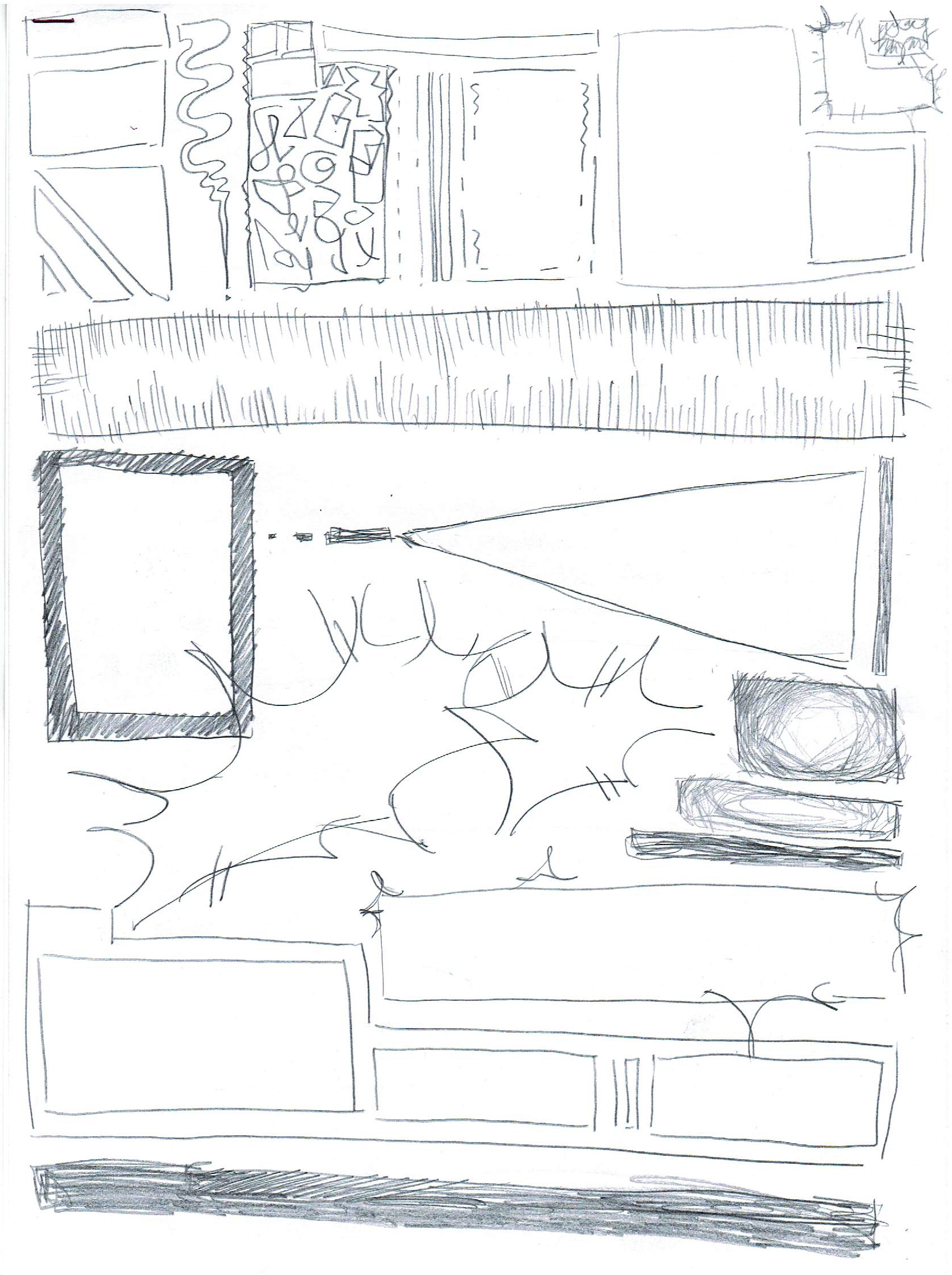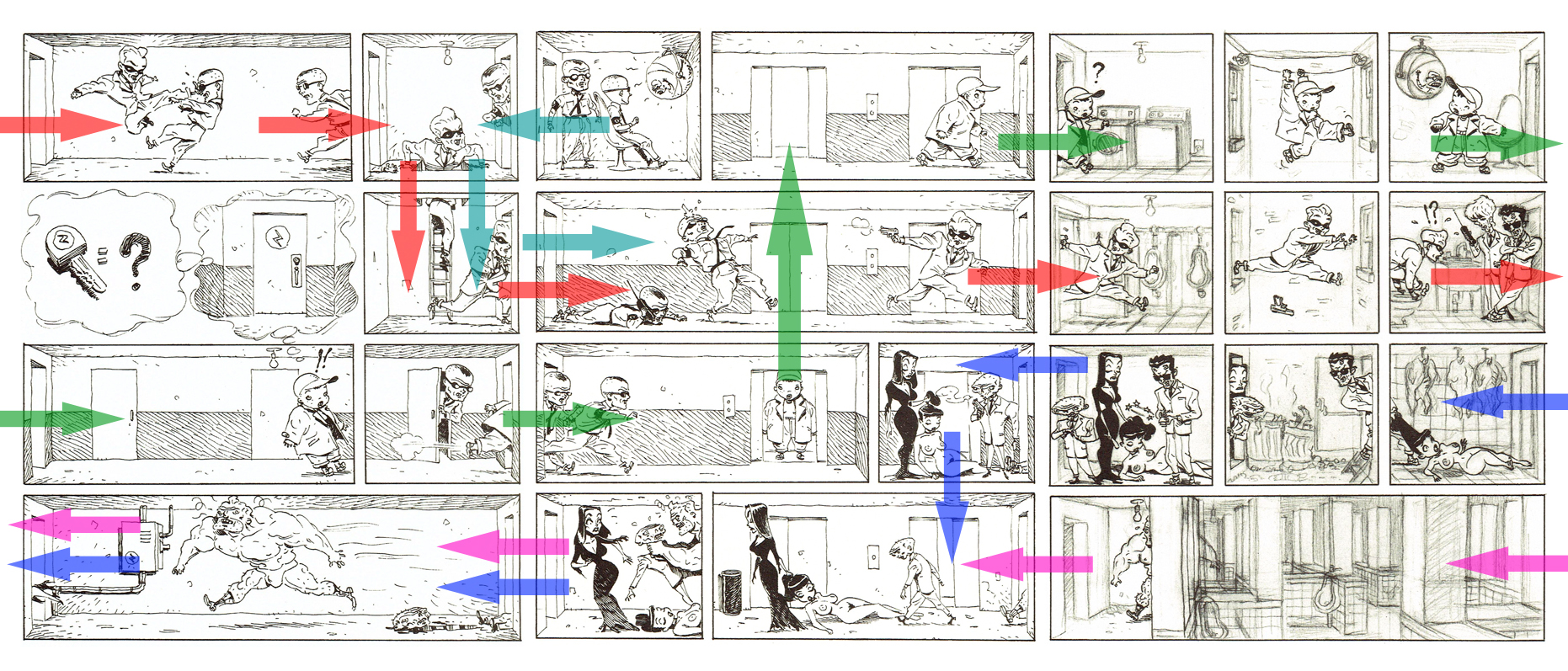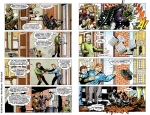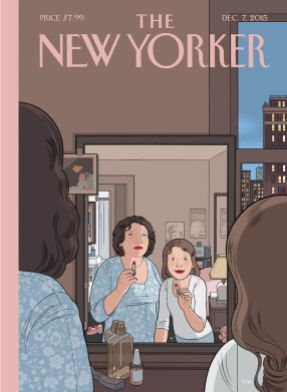During the second semester of the 2021-22 academic year, we welcomed spearheading Thai artists Peeraphat Kittisuwat, Faan Peeti, Superfah Jellyfish and Isaree Pipatpongsa who held workshops in three different courses, with the goal of introducing our Inter CommArts Thai and exchange students to new graphic and narrative techniques in order to develop their visual literacy & composition skills in preparation of their final creative projects.
A) “TRANSITION WORKSHOP” with Thai designer & cartoonist PEERAPHAT KITTISUWAT
February 22, 2022. First on-site guest lecture/workshop in 2 years! The Inter CommArts students of my Creative Writing (Section 11: Experimental Comics) course welcomed Thai designer and cartoonist khun Peeraphat Kittisuwat, founder of P. Library Design Studio. After introducing us to his different works (in experimental and live-drawing animation, mural painting, book design of The Art of Thai Comics…) related to his stunning cutout & double-sided non-linear comics leporello in-between, khun Peeraphat invited our students to play with his book’s print proofs to compose new looped graphic narratives by cutting/pasting/rearranging sequences with new “twists”. The 11 students presented their narratives at the end of the workshop, getting comments and feedbacks from our guest. PS: it felt good to get back to a communal creative experience with the students (while respecting all Covid safety measures).


Some works by guest artist Peeraphat Kittisuwat:








Students at work during Peeraphat Kittisuwat’s workshop:






Students’ presentations in front of the classroom, and some graphic narratives produced during the workshop:





B-C) “SHAPE & TEXTURE DOUBLE WORKSHOP” with Thai illustrators FAAN PEETI and SUPERFAH JELLYFISH
March 07, 2022. The Inter CommArts students of my Creative Writing (Section 10: Non-Fiction Graphic Narratives) course welcomed Thai artists Faan Peeti (book illustrator and cartoonist who explored creative panel layouts in her Manustrip series for a day magazine) and Superfah Jellyfish (painter, tattoo artist, and author of challenging old-school zines such as Having Sex First Time and The Intimates). They held two creative workshops exploring the symbolic use of comics panels/borders and body positivity through acrylic painting with markers. These were wonderful and inspiring midterm workshops meant to prepare the students for their final creative project. [All safety measures were respected with mandatory masks, hand-washing, and ATK tests before the lesson for all participants].

A short introduction, by yours truly, on creative uses of comics panels preceded Faan Peeti’s workshop.




Some works by guest artist Faan Peeti:






Some works by guest artist Superfah Jellyfish:





Pictures from Faan Peeti’s talk and workshop on the creative use of comics panels/borders. Students were then asked to compose an autobiographical or autofictional comics page playing with the symbolism of comics panels/borders.








Pictures from Superfah Jellyfish’s talk and workshop on the creative use of acrylic painting and black markers to address body positivity.












D) “SHŌJO MANGA & RAPE CULTURE” TALK & WORKSHOP with Thai illustrator ISAREE PIPATPONGSA
March 29, 2022. Fourth and final guest lecture/workshop for the semester. The Inter CommArts students of my Imaginative Communication course welcomed Thai artist Isaree Pipatpongsa (Izary P. Pipat). Khun Isaree talked about her thesis Rape culture awareness campaign through the female perspectives and Shojo Manga influences (School of Fine and Applied Arts, Bangkok University), with an introduction to the history of Shōjo Manga, her take on the genre to address the issue of Rape Culture in Thailand, her thesis process and design concepts, and a presentation of the resulting [and stunning] A1 comics digital prints, animation and journey kit. The students then participated in a workshop, revisiting Shōjo Manga pages with various techniques (drawing, tracing paper layers, screentones, diplopia effect, collage…) to reveal insidious aspects of the Rape Culture. It was a fascinating talk and highly meaningful and creative workshop! [All safety measures were respected with mandatory masks, hand-washing, and ATK tests before the lesson for all participants].
Pictures from Isaree Pipatpongsa’s talk, with an introduction to the history of Shōjo Manga, her take on the genre to address the issue of Rape Culture in Thailand, her thesis process and design concepts.

The students got the opportunity to take a close look at Isaree Pipatpongsa’s stunning A1 comics digital prints and thesis journey kit.







Students were provided with relevant manga pages, and their tracing paper versions as well as screentone sheets. Applying various techniques (drawing, tracing paper layers, screentones, diplopia effect, collage, black-out poetry…), they composed new pages addressing the Rape Culture issue and the victim’s traumatic experience. Here are some pictures of the workshop, with guidance by Isaree Pipatpongsa, and of the class presentations and the resulting graphic narratives.















My warmest thanks to khun Peeraphat Kittisuwat, khun Faan Peeti, khun Superfah Jellyfish and khun Isaree Pipatpongsa for these wonderful talks and workshops!























































































































































































